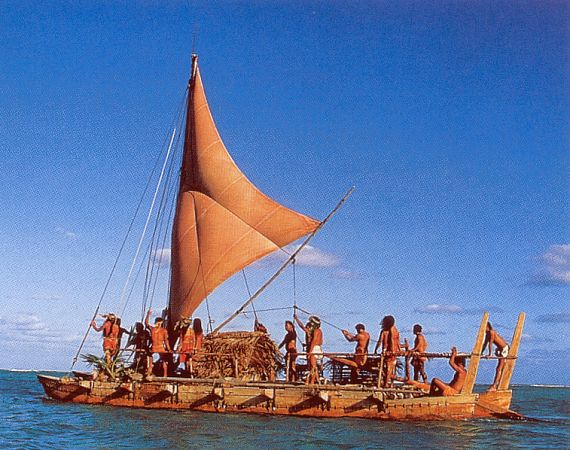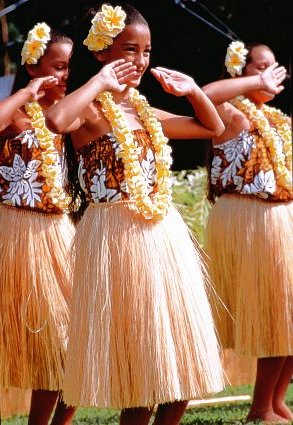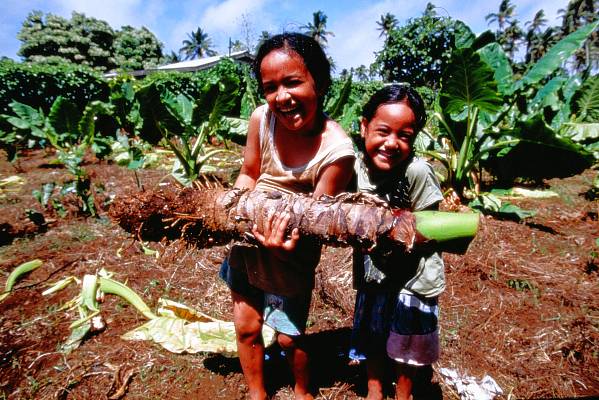Ethnic Groups and Societies
Oceania is widespread and its population is large. Social cultures are quite diverse. Take the way in which the society of Polynesia is composed, for example. It is stratified, while that of Melanesia is based on equal rights. As for agricultural management, slash-and-burn cultivation is used, which is suited to the local conditions. We can also see terrace cultivation, which creates a new ecological system, as well as other kinds of cultivation.
Nationalism, unique cultural concepts, and social forms make people re-evaluate the way they see the world and the universe.
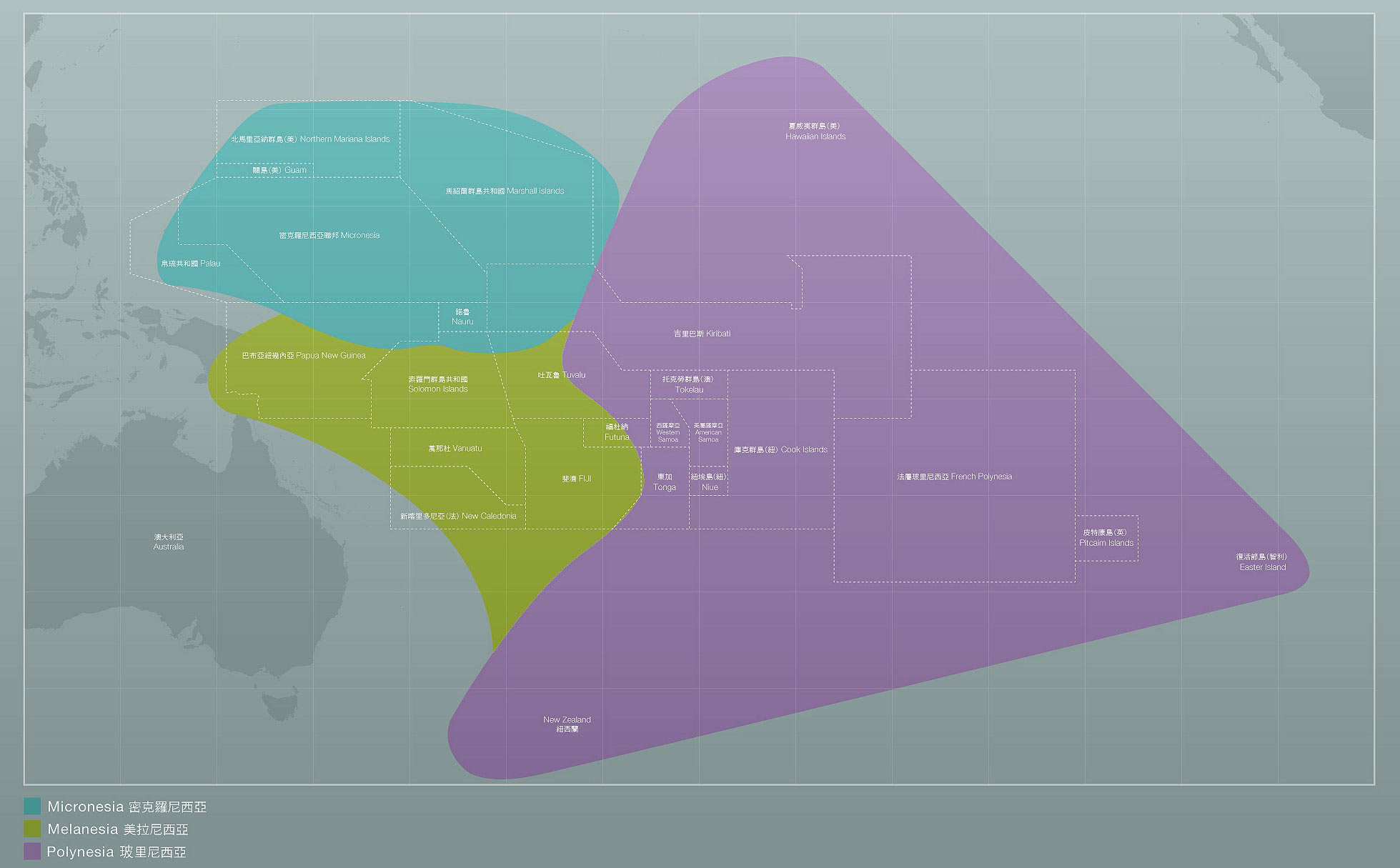
Sundanoids with dark skin and curly hair were the first people to arrive on the islands of Oceania. About 5,500 years ago, Mongolians migrated to the Pacific islands, traveling the long journey to West Micronesia.
The physical characteristics of Mongolians are quite different. Their skin is light or dark and they are short or medium in height. Their skulls are round or long and narrow, their hair is straight or curly, and their facial features are flat or sharp. The Mongolians in the Pacific Islands are mainly from the southeastern coast of Asia.
Another theory indicates that Austronesian migrants began spreading out around 3,600 B.C. They might have come from southern China or Taiwan, and then to the Philippines, Malaysia and Indonesia. Finally, they spread eastward to Melanesia, Micronesia and Polynesia.


Micronesia means isles, and this archipelago includes Guam, Yap, Palau, Mariana, Caroline Islands, Marshall Islands, Nauru and Gilbert, etc. They have a combined population of 250,000.
The first Micronesians arrived about 3,000 years ago. Later, Melanesians and Polynesians also came here. Before the arrival of European colonists, there was class polarization. The indigenous Micronesians maintained a matriarchal system, and worshiped female ancestors. Most of the clan leaders were women. Men and women also formed associations.
They mainly carried out tropical agriculture and fishing. There are terraces and artificial irrigation systems for growing paddy rice in the western isles. In the past, stone implements were mostly used in the western areas, while shell implements were mainly used in the eastern areas, such as shell hoes, shell knives and shell axes. Trading was carried out among the isles, and they used currencies such as stone plates, seashells, tortoise shells, straw mats and feathers.
Generally speaking, the houses of the noble class were fastidiously built on stone pillars, and the houses of the common class were thatched cottages built with branches and leaves. Residents on the isles excelled in boat building and sailing, and they could draw navigational maps with branches and seashells. There were picture writings in some places, and the most typical pictures are the ones that were drawn on the gables of the men's meeting hall in the Palau Archipelago. There are relics, as well, of a megalithic culture.

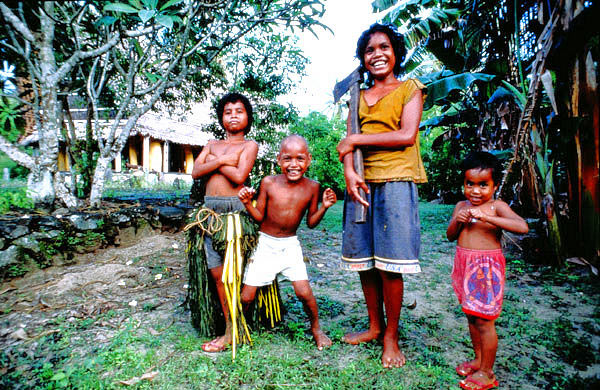
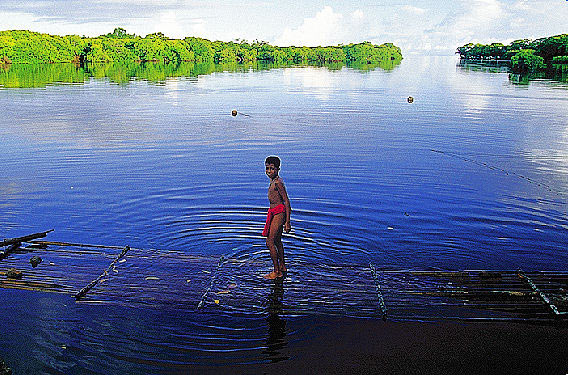
The Melanesia Archipelago means "Dark-skinned Peoples Islands", and includes Solomon, Vanuatu, New Caledonia, Fiji, Tonga, Bismarck and New Guinea, etc.
The Austronesian Melanesians might have immigrated here 3,000 years ago. It is said that humans have lived in New Guinea for some 50,000 years. When the English and French colonists invaded, they found that the tribal form was primarily based on clan organizations. Due to the belief in shamanism and divination, there were specialized shamans.
Yam and beans were cultivated. Fruit trees included coconut palms, banana trees, sago trees and breadfruit trees. Their main agricultural implements were digging bats and stone axes. There were artificial irrigation systems in some places. The people here excelled in fishing. They also raised pigs, chickens and dogs, and were involved in many artisan industries. They were also adept at building boats and making pottery and bark cloth.
Generally, their houses were thatched cottages. The roof was either round or in the form of an inverted V ("A frame").
Boats were made of the trunks of breadfruit trees, and were equipped with an outrigger on one side to maintain balance. Large boats were made using boards with sails made of straw mats, and could accommodate 40 people and sail for hundreds of miles.

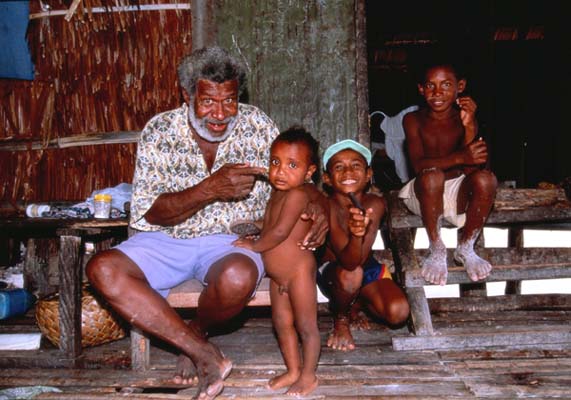
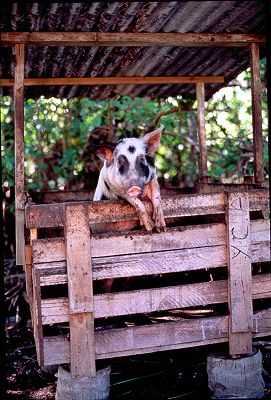
Polynesia means many islands. The Polynesians include the Maori, Samoans, Tongans, Tuvaluans, Hawaiians, Tahitians, Tokelauans, Cook Islanders, Wallisians, Niueans, Easter Islanders, etc., which total about one million. They speak many dialects, practice shamanism and embrace polytheism.
The ancestors of the Polynesians were the Lapita people who migrated here from Southeast Asia about 2,500 years ago. At the very beginning, they lived on the Society Islands, and then spread northward to Hawaii, eastward to Easter Island, and southwest to New Zealand.
At the end of the 18th century, when the European colonists arrived, there were strict stratification systems in Hawaii, Tahiti and Tonga.
The islanders developed fertilization methods and artificial irrigation. There were terraces in some places. They raised pigs, dogs and chickens. They possessed excellent fishing skills, and developed a diversity of tackle and fishing methods. They used stone, bones, seashells and wood to make tools, and were also good at weaving and woodcarving. Easter Island, which is located at the easternmost point of Polynesia, is famous for its megalithic statues.
Most of the houses are built with branches, straw and leaves, and the roofs are in the shape of an inverted V ("A frame"). Those of the noble class usually built their houses on stone foundations or groundsills. They were adept at shipbuilding and sailing. "The catamaran" can be as long as forty meters, and can accommodate 150 people.

